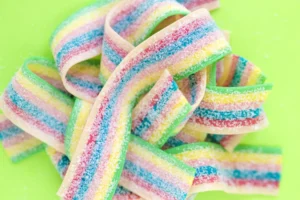
Citrus fruits, soda, tomatoes, vinegar-based dressings — we call them “acidic foods.” But do they actually harm your teeth? Or is that just another food myth?
Let’s get straight to it: Yes, acidic foods can damage your teeth — but it depends on how often and how you consume them.
Here’s what’s really going on in your mouth, and how to enjoy your favorite tangy foods without ruining your enamel.
What Acid Does to Your Teeth
Your teeth are protected by enamel — a hard outer layer that doesn’t grow back once it’s worn down. Acidic foods lower the pH in your mouth, which softens enamel temporarily.
Over time, frequent acid exposure can lead to:
- Enamel erosion (thinner, weaker teeth)
- Sensitivity to hot, cold, or sweet foods
- Increased risk of cavities
- Yellowing (as enamel thins and dentin shows through)
Common Acidic Foods and Drinks
- Citrus fruits (lemons, oranges, grapefruits)
- Carbonated drinks (even sparkling water)
- Vinegar-based foods (pickles, salad dressings)
- Tomatoes and tomato sauces
- Wine, energy drinks, fruit juices
These aren’t “bad” foods — they just need to be consumed with awareness.
How to Protect Your Teeth (Without Giving Up Acidic Foods)
1. Don’t Brush Right After Eating or Drinking Acidic Foods
Brushing too soon can rub softened enamel away. Wait at least 30–60 minutes before brushing.
2. Rinse With Water
After acidic foods, swish with water to help neutralize your mouth’s pH and wash away lingering acids.
3. Use a Straw for Acidic Drinks
Straws reduce contact between acidic liquids and your front teeth — especially useful with sodas, juices, and wine.
4. Eat Acidic Foods With Other Things
Pairing acidic items with neutral or calcium-rich foods (like cheese, leafy greens, or nuts) helps buffer the acid.
5. Use Fluoride Toothpaste
Fluoride strengthens enamel and helps it recover from mild acid exposure.
6. Watch Frequency, Not Just Quantity
It’s not just how much acid you consume — it’s how often. Sipping soda all day is worse than drinking it all at once with a meal.
Signs of Acid Erosion to Watch For
- Teeth look more yellow or dull
- Edges feel rough or look thinner
- Increased sensitivity
- Small pits or indentations on the surface
If you notice these, it’s a good time to talk to your dentist.
Final Thought
Acidic foods aren’t the enemy — but erosion is real. By being smart about when and how you enjoy sour, sparkling, or citrusy favorites, you can keep both your taste buds and your enamel happy.
A little knowledge goes a long way in keeping that smile strong for years to come.
Picture Credit: Freepik

